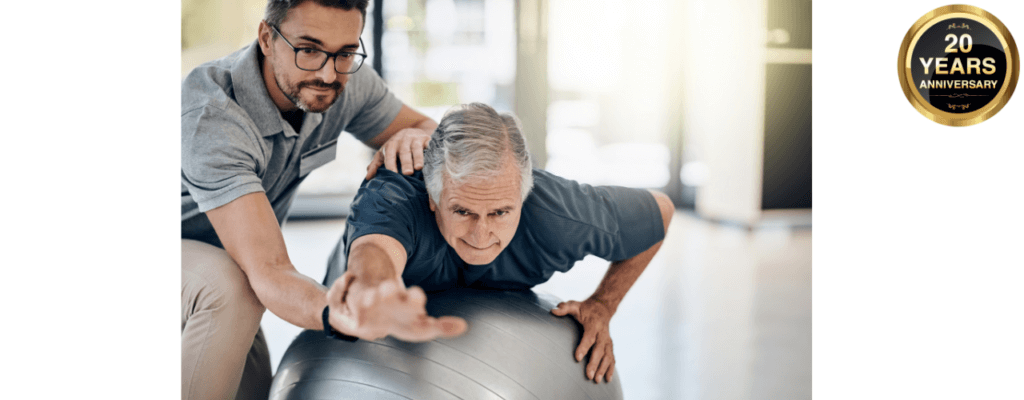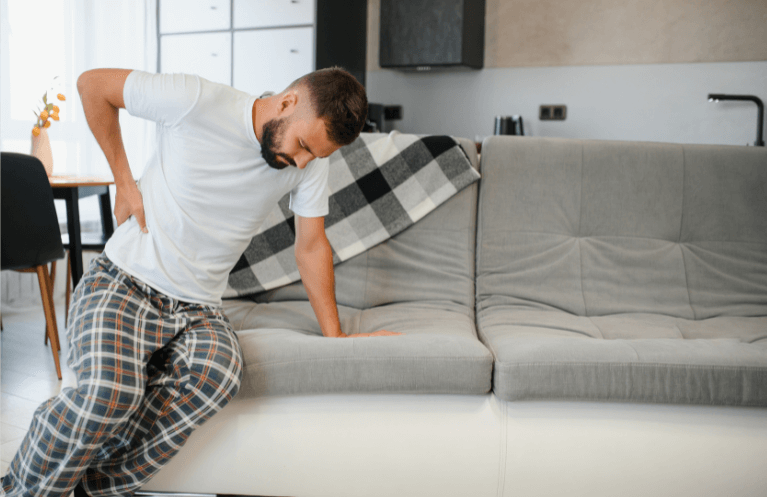Stretching can be a quick and effective way to relieve back pain. But, to truly address the root cause, we highly recommend focusing on strengthening your core muscles and implementing a daily routine. This approach can bring about significant improvements, especially for those in their 40s, 50s, and 60-plus. But just because we are over 40 doesn’t mean we should stop doing the things we love.
We’re confident that you’ll see positive results with consistent effort and dedication. Remember, taking care of your body is a form of self-care, and we are here to support you on this journey.
What Are My Core Muscles?
Our motto here at Houghton Physical Therapy is that having a strong core rather than a six-pack is better. Have you ever heard the reference being used that compares your core to a “fuse box?” The fuse box is your core muscles. These muscles are within the abdominals, back, diaphragm, pelvic floor muscles, and around the hips.
If you take the time to do a few basic exercises targeting these core muscles, you will make them flexible, pliable, and strong enough to assist your arms and legs. Doing core exercises is especially important to prevent back pain as we age. Because as we all know too much, we are not as flexible as we used to be!
How Can I Strengthen My Back To Prevent Back Pain?
Start Off With A Warm-up
To help prevent back pain when doing any type of activity, you should always warm up first. Yes, it may sound surprising–after all, you are not running a marathon!–but stretching your muscles before you start an activity is important.
You will most likely be using many different muscles and joints, and it is important to recognize that you need to prepare your body, even if it is just going out for a short walk, gardening, golfing, or shoveling, to name a few. You should always warm up no matter what, in the same way, you would if you were about to go out for a bike ride or play tennis.
Stabilize Your Spine to Prevent Back Pain
One of our physical therapists, Andrew Parella, DPT, has put together three tips to stabilize your spine.
Engage your core! – more often than not, when I say “tighten the core,” a patient’s first instinct is to either flex their entire abdominal wall as hard as they can or they push their stomach out and hold their breath. Although these actions can help to support the spine, they are not sustainable actions.
- The first step to engaging the core is to draw your belly button in towards your spine; if you are doing this correctly, you should feel the muscles just below your belly button tightening while still being able to breathe.
- The next step is to flatten your back. Having your butt stick out too far can create a lot of unwanted back stress, ultimately leading to chronic back pain. Flattening out the back can decrease how much the butt sticks out and decrease the amount of unnecessary stress on the back.
- Lastly, squeeze your cheese! The bottom of your spine is in your pelvis, and the muscles that have the greatest effect on the pelvis are the glutes (butt muscles), thus squeezing our butt we are supporting our spine!
Put these steps together, and you will be one step closer to having a stable spine and preventing back pain!
Prevent Back Pain By Taking Regular Breaks To Activate Your Core
It’s important to take breaks from time to time to prevent fatigue and burnout. It’s easy to get caught up in activities and lose track of time, so it’s essential to remember to take a moment to recharge. During your break, try incorporating some core-activating exercises to re-energize and re-engage your muscles. This will help ensure that your arms and legs are working in harmony and connected to your core. So, take a well-deserved break and give your body the attention it deserves!
One of the best core-activating exercises is the “Squat!” Watch Todd Houghton in the video below explain in great detail do’s and don’ts, critiquing each step and how to optimize the movement sequence.
Should I Worry About Back Pain After An Activity?
If you are suffering from back pain after you have completed your daily exercise or activity, you might worry about whether it is something serious.
If you are, the best thing you can do is arrange a free physical therapy consultation with our team, who can help to clear your confusion and help you understand how you can get back to doing what you love.
Back pain that lasts several days is also very unlikely to go away on its own for the long term if left untreated. Our free consultations give you the answers you need.
The Fastest Way To Stop Back Pain
We aren’t able to tell you exactly how to stop your back pain in a blog because many things impact your back.
You may have existing conditions that also need to be treated so that you can enjoy your activity without stiffness or discomfort. Also, there may be an underlying problem that hasn’t been diagnosed previously, which could be why your pain keeps returning (and getting worse).
At Houghton Physical Therapy, we have a 3,200 sq ft clinic with an exceptional staff, where you can speak to a team member, ask any questions you have, and find out what is stopping you from enjoying life. The fastest way to stop your pain is to arrange a visit. You can fill out a simple web form for a free consultation, or if you prefer to talk on the phone, you can call our office at 508-223-2300.
Other Free Resources To Help Keep Active
Click Here To Get A Free Back Pain Guide – 7 Solid Solutions To End Back Pain Without Taking Medication Or Surgery
Click Here To Watch Our YouTube Video – 6 Reasons Why A Strong Core Is Better Than A Six-Pack
Click Here To Watch Our YouTube Video – Todd Houghton’s Fuse Box Theory
We also have free, downloadable reports for people with Back Pain, Knee Pain, or Neck And Shoulder Pain
Tags: back pain, physical health, physical activity, Sciatica, numbness, sciatica relief, tingling



